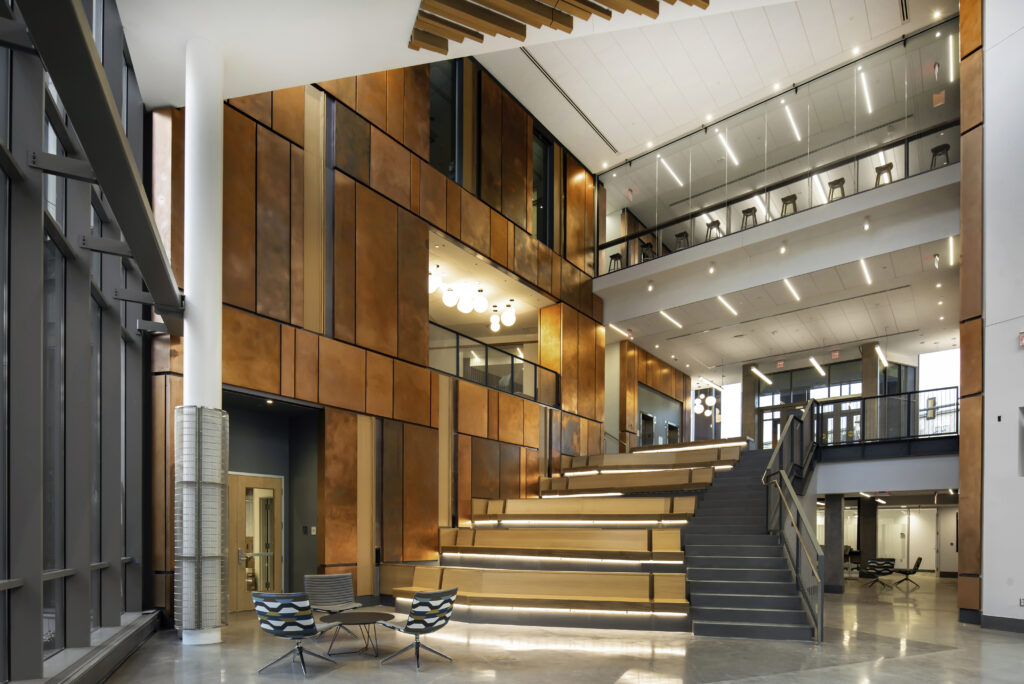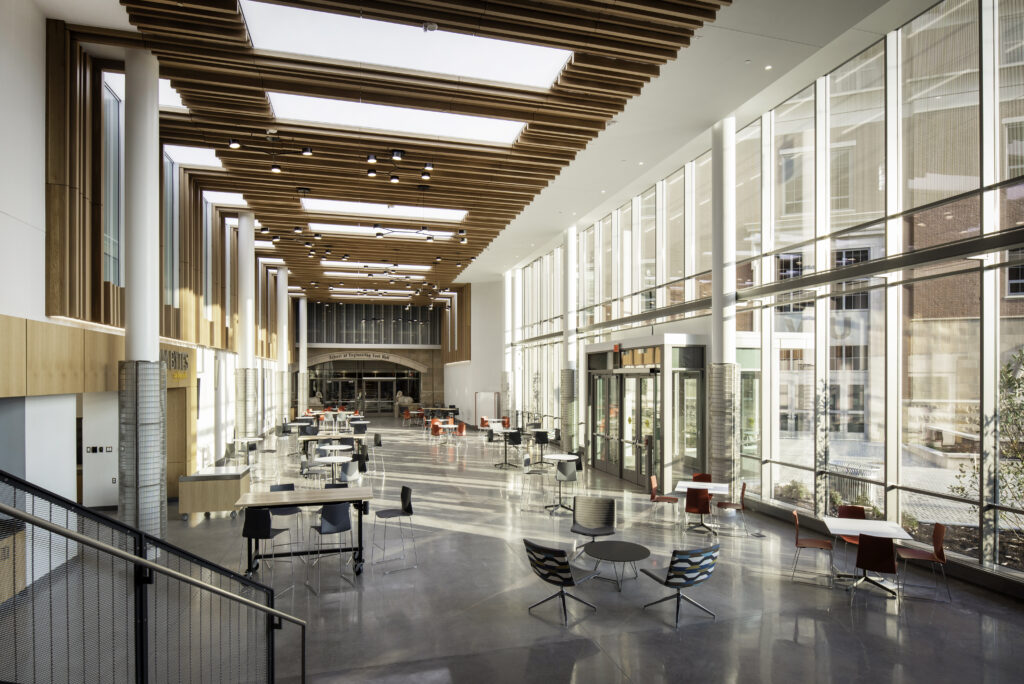VCU’s College of Engineering
Originally founded in 1996 as a public-private partnership, VCU’s College of Engineering — once a School — has flourished into a regional and national powerhouse. Enrolling nearly 1,800 undergraduate and over 300 graduate students, the College offers degrees in biomedical engineering, chemical and life science engineering, computer engineering, computer science, electrical engineering, mechanical engineering, and nuclear engineering, mechanical engineering, and, in conjunction with the adjacent School of Business, a master’s degree in computer and information systems security.
With an ambitious vision for funded research and recognition as a Top 50 engineering school, VCU engaged Baskervill and Goody Clancy in a comprehensive 2015 programming and planning study for a new Engineering Research Building. The need for a new research building grew out of the College’s 2013 Strategic Plan and the University Master Plan, which provided for an expansion adjacent to the existing Engineering East building along the Cary Street corridor. In 2016, Baskervill and Goody Clancy were selected as the design team to bring the Engineering Research Building to life.

The Engineering Research Building (ERB) design was conceived as a balance of two simultaneous goals: first, creating a vibrant, flexible, forward-thinking home for the College of Engineering’s Innovation Center, research labs, and specialized facilities; and second, completing the building assemblage already established by Engineering East and the School of Business in a consistent, compatible architectural vocabulary of traditional red brick and cast stone. The Collaboration Hub—the social heart of the complex and its most intensely used space—is designed to knit together the three buildings in an open, light-filled space, encouraging interaction across disciplines.
The building itself is a testament to modern engineering, achieving LEED Silver certification. A priority for the University and the design team – including engineers from BR+A and lab planners from Page/SST – was creating high-performance lab spaces that made use of fewer resources. With a focus on energy use and carbon reduction, the team incorporated highly-efficient mechanical systems, employing demand-control ventilation, chilled beams, and a heat recovery chiller in the lab spaces to reduce needless airflow and prevent heat loss. Occupancy sensors and use of natural light help mitigate overall energy consumption.

Unveiled in February 2021, the four-story, 133,000-square-foot Engineering Research Building significantly expands the college’s laboratory capacity for advanced research. Its specialized workspaces, including the Innovation Maker Facility, are equipped with resources for hands-on prototyping and experiential learning, all meant to reflect the real-world impacts of leading-edge engineering on commerce and the human experience. The building also allows VCU Engineering students to collaborate closely with industry partners on translational research— among them: cutting-edge entities focused in biomedical and pharmaceutical manufacturing, to cybersecurity, renewable energy, and much more. The building earned LEED Silver certification.
Project Information and Team
College of Engineering Research Building
Virginia Commonwealth University
401 W Main Street
Richmond, VA 23284
Executive Architect: Baskervill
Design Architect: Goody Clancy
Consulting Architect: Smith + McClane
Jay Woodburn, AIA, LEED AP
Principal-in-Charge, Baskervill
Ashley N. Jones, AIA, LEED AP BD+C
Project Manager, Baskervill
Jefferson Poole, AIA
Design Architect, Goody Clancy
Matthew Marsili, NCIDQ
Interior Designer, Baskervill
Contractor:
Kjellstrom & Lee
Lab Planning:
Page
Civil Engineer:
Draper Aden Associates
Structural Engineer:
Dunbar Milby Williams Pittman & Vaughan
MEP Engineer:
BR+A
